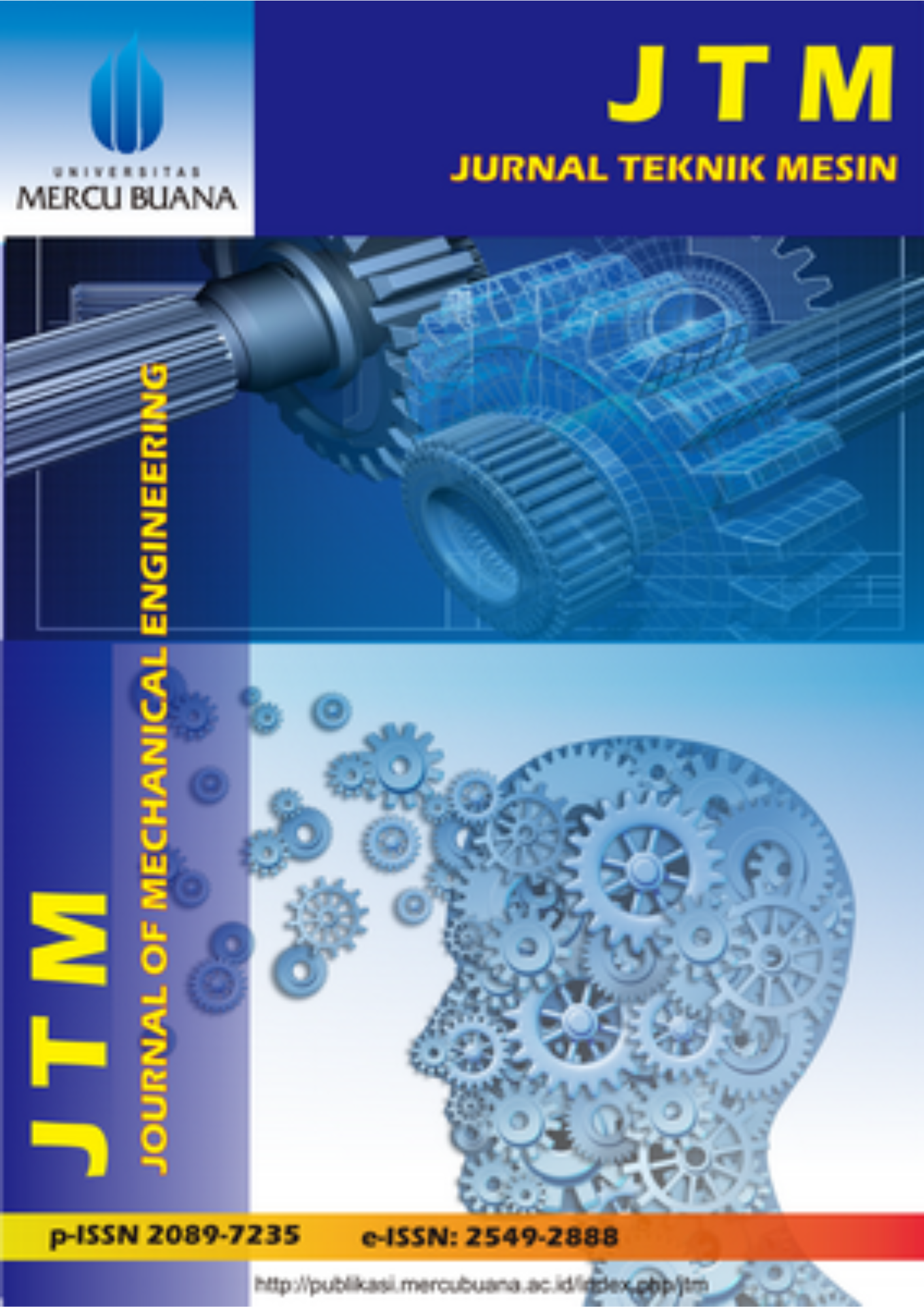INCREASED DRIVING FORCE OF NATURAL PLANT FIBER EXTRACTION RESULTS BASED ON THE RESULTS OF THE DEVELOPMENT OF NATURAL FIBER EXTRACTORS
Abstract
Keywords
Full Text:
PDFReferences
M. Alfatah Dwi Putra, Sumarlin, “DISAIN
ALAT PENGESUT DAUN NENAS
DENGAN SISTEM MEKANIS UNTUK
MENGHASILKAN SERAT,” J. Am. Chem.
Soc., vol. 123, no. 10, pp. 2176–2181,
, [Online]. Available:
https://cursa.ihmc.us/rid=1R440PDZR13G3T80-2W50/4. Pautas-para-evaluarEstilos-de-Aprendizajes.pdf
R. Kurnianingsih, M. Ghazali, and S. P.
Astuti, “Karakterisasi Morfologi Tanaman
Pisang Di Daerah Lombok,” J. Biol. Trop.,
vol. 18, no. 2, pp. 235–240, 2018, doi:
29303/jbt.v18i2.790.
A. Z. dan D. Yusri, “Banana Culvitar
Names And Synonyms in Southeast Asia,”
J. Ilmu Pendidik., vol. 7, no. 2, pp. 809–
, 2020.
I. Sulistyowarni, S. Sundari, and S. Halim,
“Potensi Komoditi Perdagangan Pisang
Dalam Rangka Memenuhi Permintaan
Dan Mendukung Ketahanan Pangan
Ditinjau Dari Perspektif Ekonomi
Pertahanan (Studi Di Kabupaten Bogor),”
J. Pertahanan Bela Negara, vol. 10, no. 3,
p. 317, 2020, doi:
33172/jpbh.v10i3.1058.
G. P. Ananta, “Potensi Batang Pisang
(Musa Pardisiaca L.) Dalam
Penyembuhan Luka Bakar,” J. Ilm.
Kesehat. Sandi Husada, vol. 11, no. 1, pp.
–340, 2020, doi:
35816/jiskh.v11i1.283.
H. SYARIFUDDIN and H. Hamzah,
“Prospek Pemanfaatan Limbah Batang
Pisang Dalam Mendukung Ekonomi
Kreatif Masyarakat Ramah Lingkungan,”
Din. J. Pengabdi. Kpd. Masy., vol. 3, pp.
–34, 2019, doi:
31849/dinamisia.v3i2.2868.
E. Sunarsih, “Konsep Pengolahan Limbah
Rumah Tangga Dalam Upaya
Pencegahan Pencemaran Lingkungan
Concept of Household Waste in
Environmental Pollution Prevention
Efforts,” J. Ilmu Kesehat. Masy., vol. 5, no.
, pp. 162–167, 2014, [Online]. Available:
http://ejournal.fkm.unsri.ac.id/index.php/jik
m/article/view/158
K. B. Syariah and G. Ilmu, “Teknologi
Material Komposit,” no. september 2016,
pp. 1–6.
Mardjuki, “Pemanfaatan enceng gondok
sebagai penguat fiber glas terhadap
kekuatan tarik,” pp. 213–221, 2006.
A. K. F. Hassan, L. S. Mohammed, and H.
J. Abdulsamad, “Experimental and artificial
neural network ANN investigation of
bending fatigue behavior of glass
fiber/polyester composite shafts,” J.
Brazilian Soc. Mech. Sci. Eng., vol. 40, no.
, 2018, doi: 10.1007/s40430-018-1098-4.
M. Fitri and S. Mahzan, “The effect of fibre
content, fibre size and alkali treatment to
Charpy impact resistance of Oil Palm fibre
reinforced composite material,” IOP Conf.
Ser. Mater. Sci. Eng., vol. 160, no. 1, 2016,
doi: 10.1088/1757-899X/160/1/012030.
M. J. Mochane et al., “Recent progress on
natural fiber hybrid composites for
advanced applications: A review,” Express
Polym. Lett., vol. 13, no. 2, pp. 159–198,
, doi:
3144/expresspolymlett.2019.15.
H. Suryanto, Y. S. Irawan, and R.
Soenoko, “KARAKTERISTIK SERAT
MENDONG (Fimbristylis globulosa),”
ResearchGate, no. November, 2013
DOI: http://dx.doi.org/10.22441/jtm.v13i2.27623
Refbacks
- There are currently no refbacks.
Copyright (c) 2024 Jurnal Teknik Mesin
Jurnal Teknik Mesin (JTM)
Program Studi Teknik Mesin, Fakultas Teknik, Universitas Mercu Buana
Jl. Meruya Selatan No. 01, Kembangan, Jakarta Barat 11650, Indonesia
Email: [email protected]
Telp.: 021-5840815/ 021-5840816 (Hunting)
Fax.: 021-5871335
JTM is indexed by the following abstracting and indexing services:

This work is licensed under a Creative Commons Attribution-NonCommercial 4.0 International License.






.png)







_(486_x_90_px)_(486_x_190_px)_(486_x_190_px)_(4).png)
_(486_x_90_px)_(486_x_190_px)_(486_x_190_px)_(5).png)
2.png)
.png)